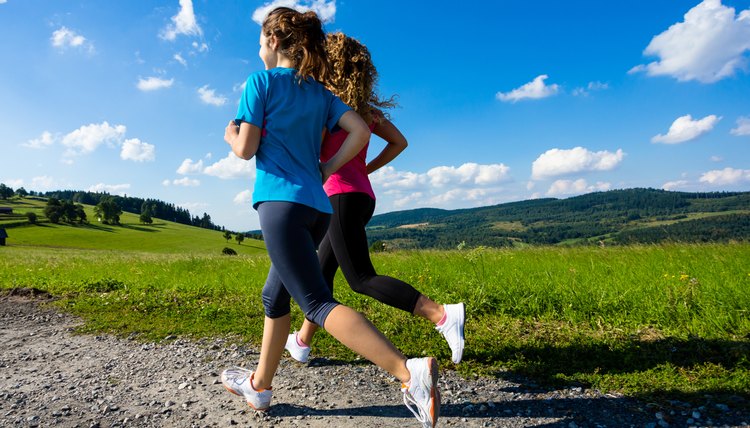Speed Training for 14-Year-Olds

When organizing speed training for early teen athletes like 14-year-olds, gradual progress is important. Trying to use methods for advanced athletes can slow the progress of young athletes and fail to develop an adequate athletic base for future training practices. You must also recognize the changes that these young athletes are seeing; large variations occur at this age in terms of size and athletic ability.
Building a Foundation of Speed
Before you begin developing athletes’ ability to move faster, you need to improve their ability to move better. You can do this by breaking down and practicing movements that the athlete will later use at top speed. Some of these movements are marching, skipping, shuffling, cutting and jumping. Being able to perform these movements under control and with superior form will aid an athlete's ability to learn more advanced movements in future training.
Learning to Decelerate
One of the often forgotten things when training athletes is teaching the ability to decelerate. This aspect of speed training is critical because it is used often in team sports. Proper deceleration training begins with proper athletic position: athletes have their feet slightly wider than shoulder width apart with their toes forward and weight slightly shifted onto the balls of the feet.
From here, the athlete should drive and push the floor apart as if he is tearing a piece of paper between his feet. Once he masters this movement, he can move to vertical jumps with an emphasis on landing in that athletic position. This drill teaches athletes to deal with the amount of force that they must stop when they are sprinting.
Learning to Accelerate
Once an athlete has the ability to decelerate, she can begin to focus more on learning to accelerate. The best way to learn proper acceleration is by pushing a heavy sled or an Olympic weight plate. This drill shows the importance of pushing down and back into the ground, a key component in sprinting speed.
Arm action is another key variable for athletes to master. Keeping the arms bent in a 90-degree angle and swinging from the shoulder improves mechanics and increases speed. This motion is vital when trying to improve speed and compete.
Strength and Endurance
As 14-year-olds begin competing in high school sports, strength training takes on a bigger role in improving performance. The introduction of strength training during puberty can improve a teen’s athletic ability and speed to a greater degree than speed training alone. Weight work is an important inclusion to a speed training program for any young athlete. Exercises that work the whole body are most appropriate, including dead lifts, squats, split squats, lunges, pushups, pullups and planks.
Young athletes must work on speed endurance as well. Establishing a base of speed endurance helps them train appropriately and repetetively and display speed consistently in sports. Doing build-up sprints over longer distances and monitoring rest periods can aid in building sufficient speed endurance.
Writer Bio
Bill Rom is the director of performance training at Prospect Sports, where he works with athletes from the NFL, MLB and throughout College Sports. He has written for EliteFTS.com, Stack.com, as well as been a speaker for the National Strength and Conditioning Association. His writing focuses on sports performance training and fitness.
